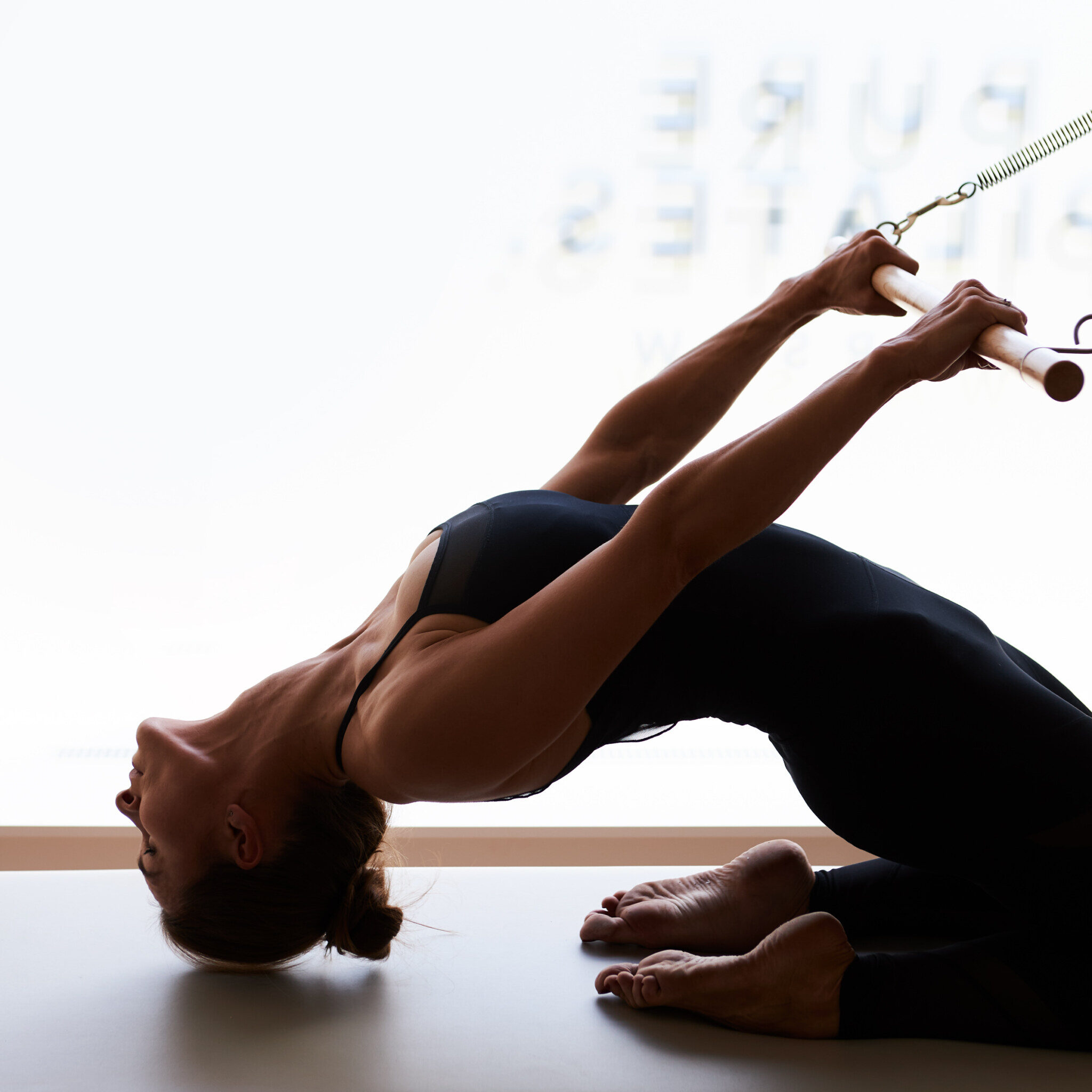
Pilates is a movement system designed to improve STRENGTH, STRETCH and CONTROL of our whole body. Although, mat exercises are the most popular form of exercises, they only represent part of the holistic physical fitness system created by Joseph Pilates. A combination of mat and apparatus-based training is the most effective and provides the quickest results. In exercises using Pilates apparatus our body works against the resistance of the springs , which tones and shapes the body – creating long and lean muscles. Exercises build and improve deep core muscles, helping with overall spinal health.
There are 6 foundation
principles of the Pilates,
approach to exercise

The execution of the exercises alone is not enough; form and presence of mind are of paramount importance. Maximum benefits for our body and mind are only achieved by application of the above principles.
Pilates history
Joseph Pilates
Joseph H. Pilates was born in Germany, in 1883. As a sickly child he dedicated his whole life to find the system to achieve physical strength, vitality and great fitness. Studying the human anatomy and animal movement, he tried to find the most effective system of physical exercises, originally targeting himself. Originally, he studied gymnastics and body building and even as a teenager achieved excellent sport results. During the First World War he moved to England, where he earned his living as a circus performer, boxer and self-defence instructor. During the war, he was interned in a camp, where he started to help his inmates to stay fit and overcome difficult living conditions. He taught them elements of boxing and self-invented set of exercises. Those who were unable to get up from bed, trained with springs attached to the bed frame. It was when the machine prototypes were created and when the Pilates system began to take shape. In 1920’s, as a coach of the future world boxing champion, Max Schmeling, he moved to the United States. On the way to America, he met his future wife, Clara, and the couple opened a studio in New York City. The dancers were among clients of a studio, as in Pilates system (called “Contrology’ at that time), they found an ideal method to deal with injuries. Well known choreographer and dancer George Balanchine used to call Joseph Pilates a ‘genius of body’. After almost a century, it is difficult not to agree with that. Pilates was ahead of his time in terms of understanding of human body and its biomechanics. He created an ideal training system, which strengthens body and combines it with mind and soul.
Romana Kryzanowska
Romana met Joseph Pilates in 1941, when as a young ballerina studying at George Balanchine’s School of American Ballet suffered an ankle injury. Training with Pilates, she quickly discovered that not only her ankle healed but that she also became a much better dancer. Romana studied with Joseph and Clara, and continued, under their watchful eyes, as an instructor in their studio for decades. After the death of the couple, Kryzanowska continued to operate Pilates’ original studio for the next 50 years, teaching next generations of instructors the original and pure Pilates method. Nobody else worked with Joseph Pilates as long as Romana, thus nobody knew Joseph Pilates’ work and methodology better than Kryzanowska.
Romana’s Pilates today is headed by her daughter – Sari Mejia Santo, who also had a chance to learn directly from the master. She taught, at her mother’s side for more than three decades. Similarly to Romana, her mission is to pass the original form of the Pilates method to the new generation of instructors. She is helped by Romana’s selected pupils, today themselves instructors with many years of experience and great knowledge, Juanita Lopez, Cynthia Lochard, Javier Perez-Pont, Philipe Taupin and my mentor – Majorie Oron. Schooling and preparing the instructors, they conform to the highest and loyalty to the original method. In the current world, where ‘Pilates’ covers a plethora of duplicates making it a blurred denotation, the mission is to remain with the original source and foundation of the pure Pilates exercise and philosophy, proving it to be the best and the most effective.
What Can Pilates Do for You?
- builds ‘Powerhouse’, i.e. spine stabilizing muscles,
- improves posture, wrong posture can often be the source of pain,
- tones muscles helping to create a harmonic silhouette,
- teaches body control,
- brings balance between strength and flexibility of the body,
- helps to recover after injury or trauma
- reduces stress,
- gives grace and coordination to body motion,
- restores balance between body and mind,
- brings body awareness and concentration
Who can practice Pilates?
- Pregnant women
- Dancers
- Men
- Women
- Seniors
- Athletes
- People with specific medical conditions

